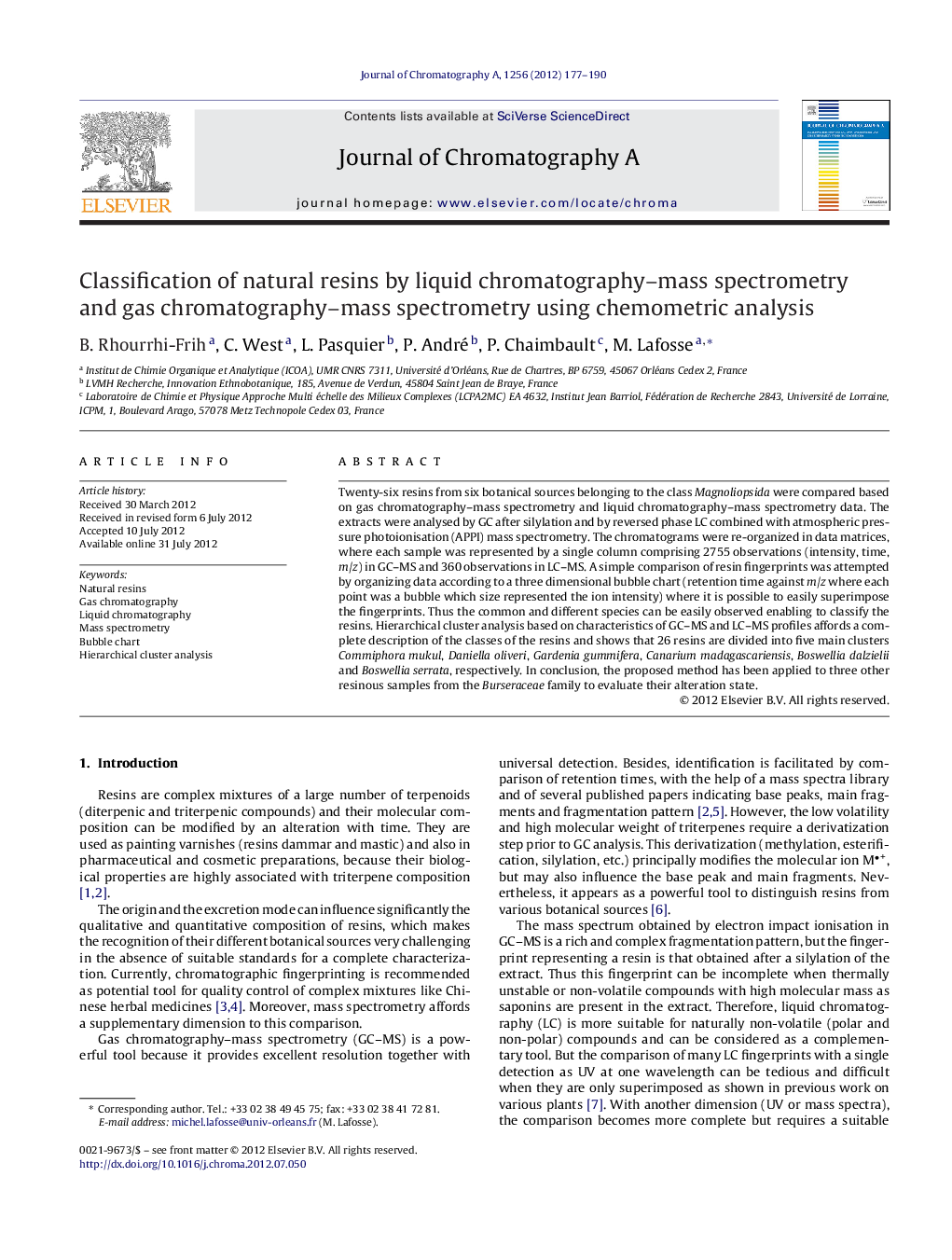| Article ID | Journal | Published Year | Pages | File Type |
|---|---|---|---|---|
| 1200393 | Journal of Chromatography A | 2012 | 14 Pages |
Twenty-six resins from six botanical sources belonging to the class Magnoliopsida were compared based on gas chromatography–mass spectrometry and liquid chromatography–mass spectrometry data. The extracts were analysed by GC after silylation and by reversed phase LC combined with atmospheric pressure photoionisation (APPI) mass spectrometry. The chromatograms were re-organized in data matrices, where each sample was represented by a single column comprising 2755 observations (intensity, time, m/z) in GC–MS and 360 observations in LC–MS. A simple comparison of resin fingerprints was attempted by organizing data according to a three dimensional bubble chart (retention time against m/z where each point was a bubble which size represented the ion intensity) where it is possible to easily superimpose the fingerprints. Thus the common and different species can be easily observed enabling to classify the resins. Hierarchical cluster analysis based on characteristics of GC–MS and LC–MS profiles affords a complete description of the classes of the resins and shows that 26 resins are divided into five main clusters Commiphora mukul, Daniella oliveri, Gardenia gummifera, Canarium madagascariensis, Boswellia dalzielii and Boswellia serrata, respectively. In conclusion, the proposed method has been applied to three other resinous samples from the Burseraceae family to evaluate their alteration state.
► Twenty-six natural resins are classified with 3D bubble charts and hierarchical cluster analysis. ► GC–MS and LC–APPI-MS fingerprints are easily compared using bubble charts. ► Hierarchical cluster analysis provides a complete description of the class of the resins. ► GC–MS and LC–MS tools are complementary and appropriate to authenticate unknown samples.
